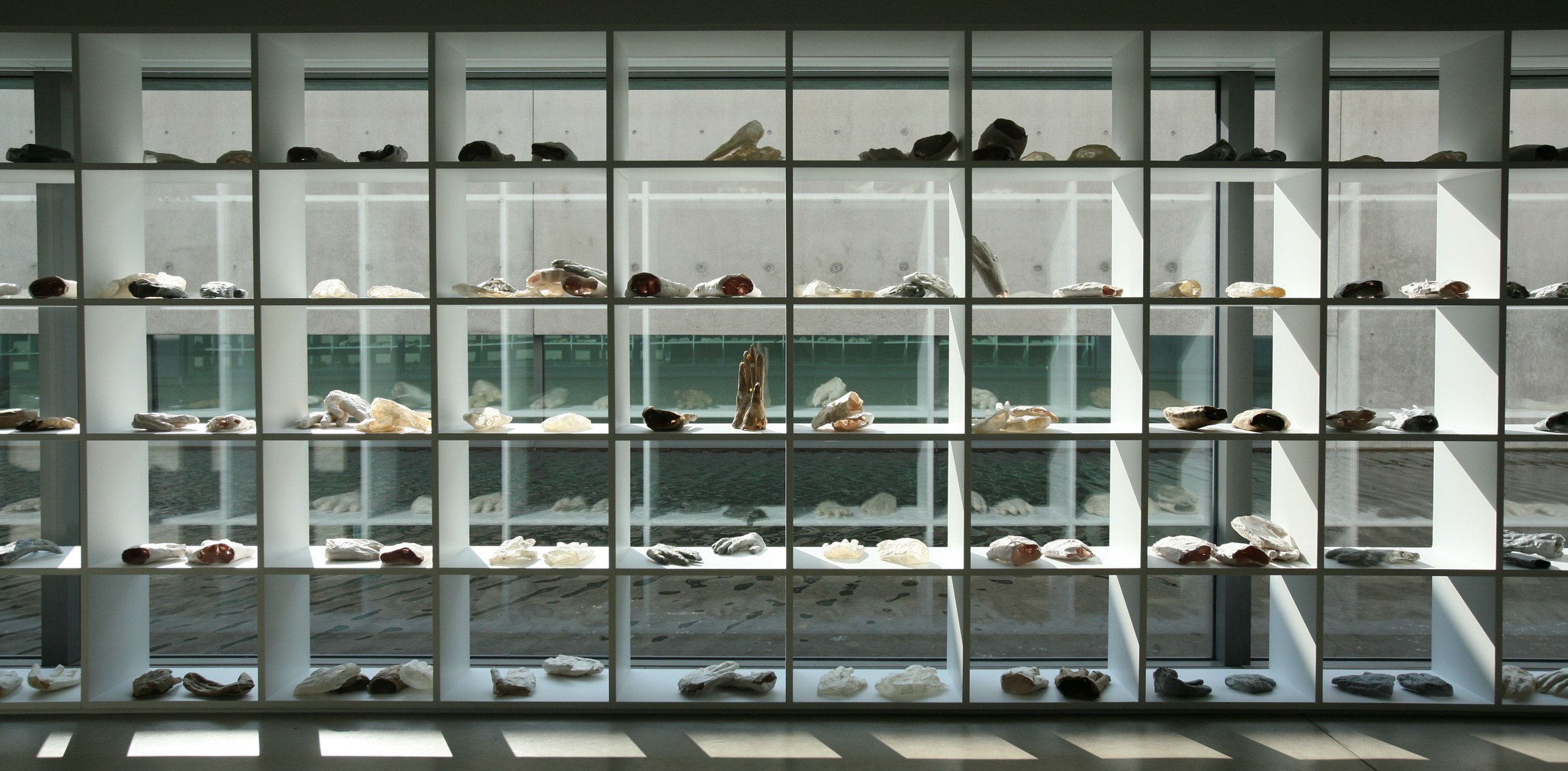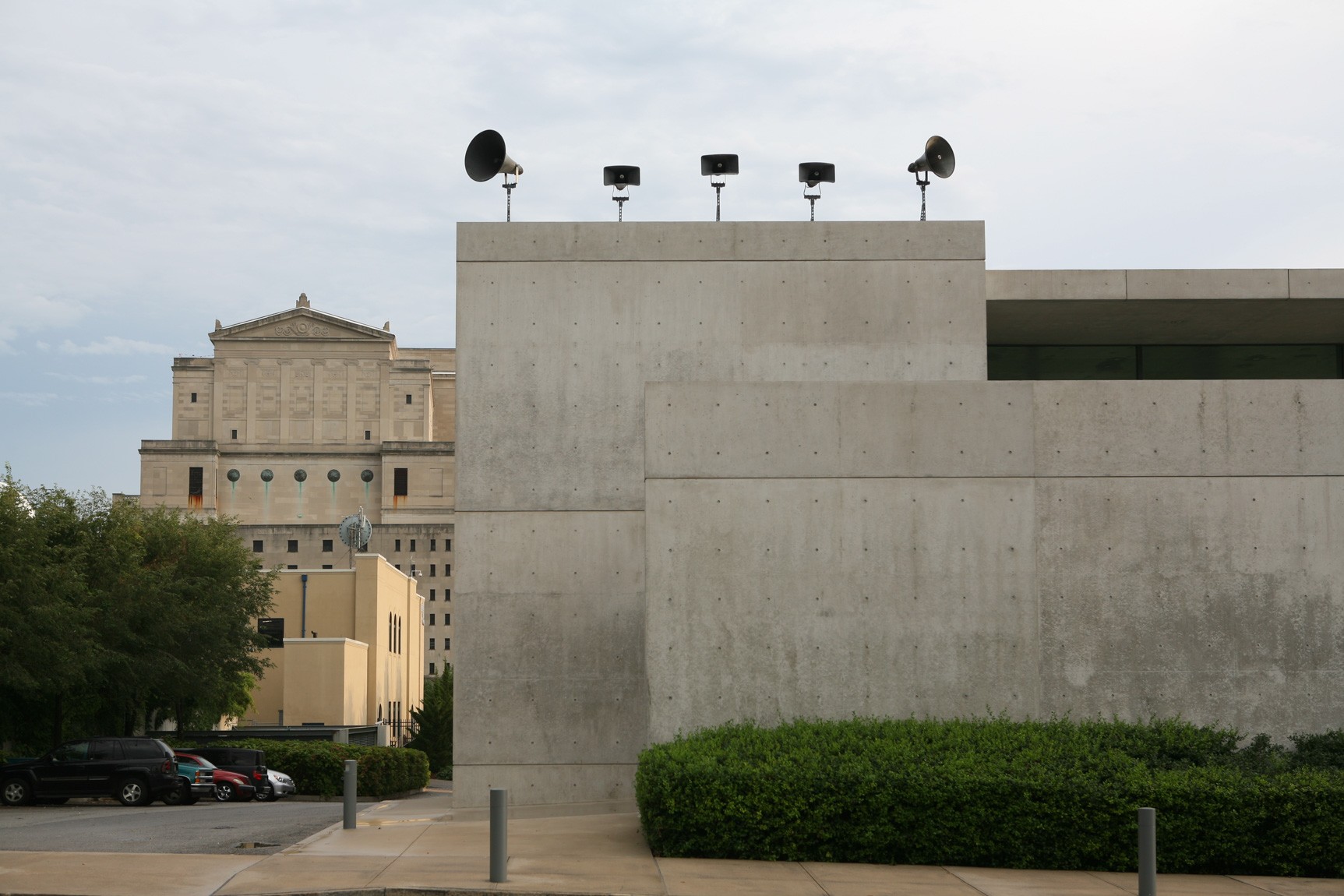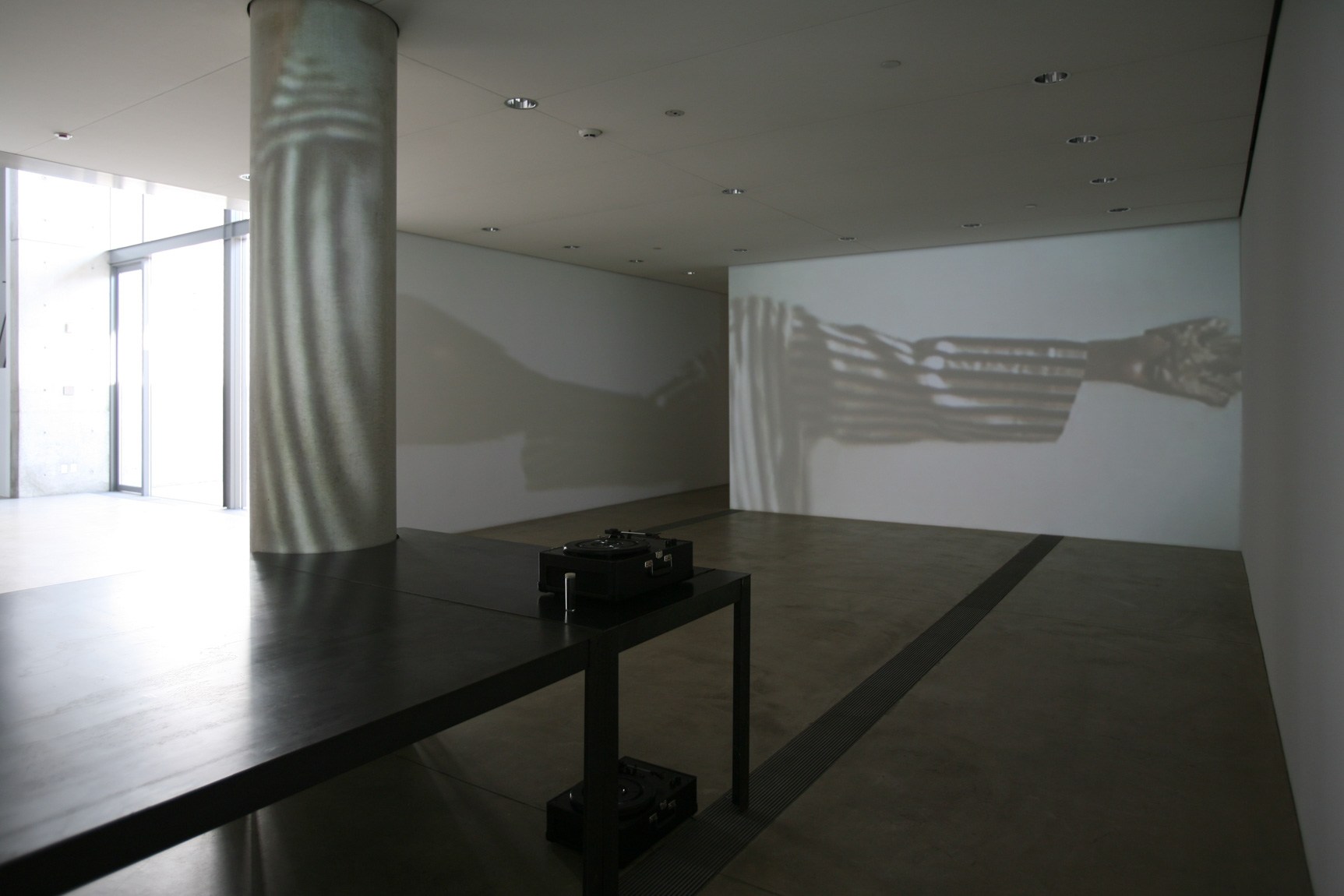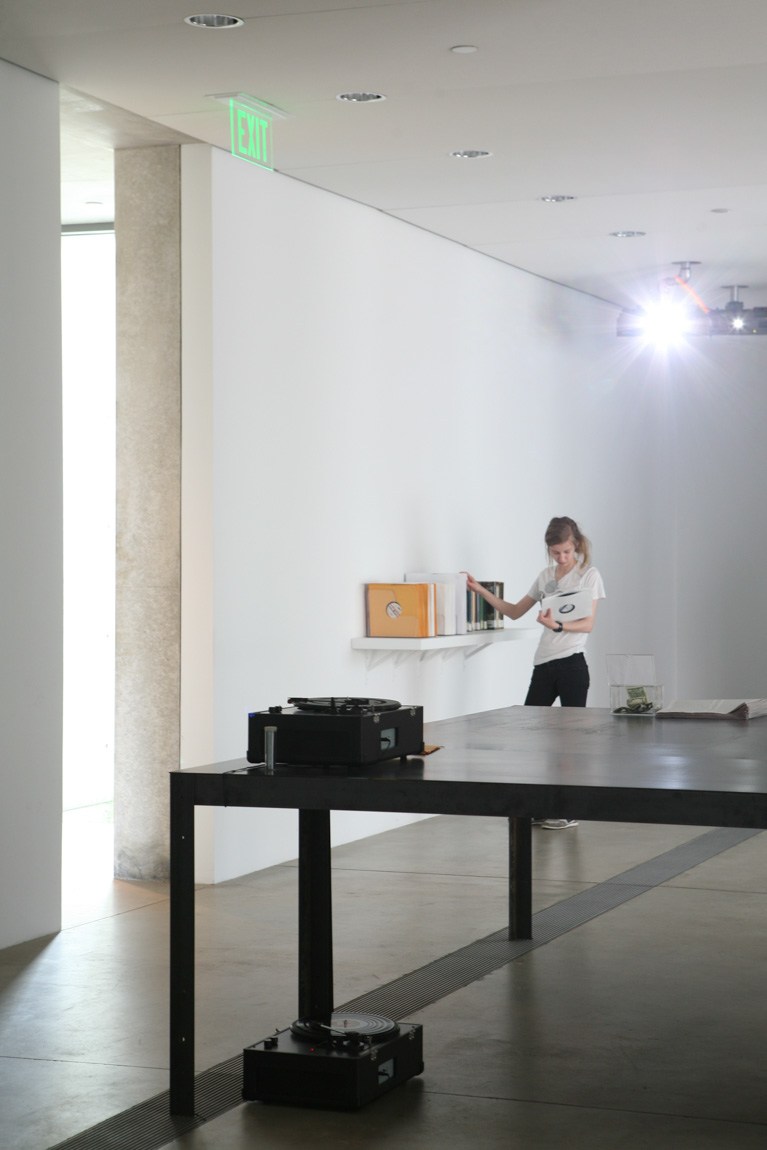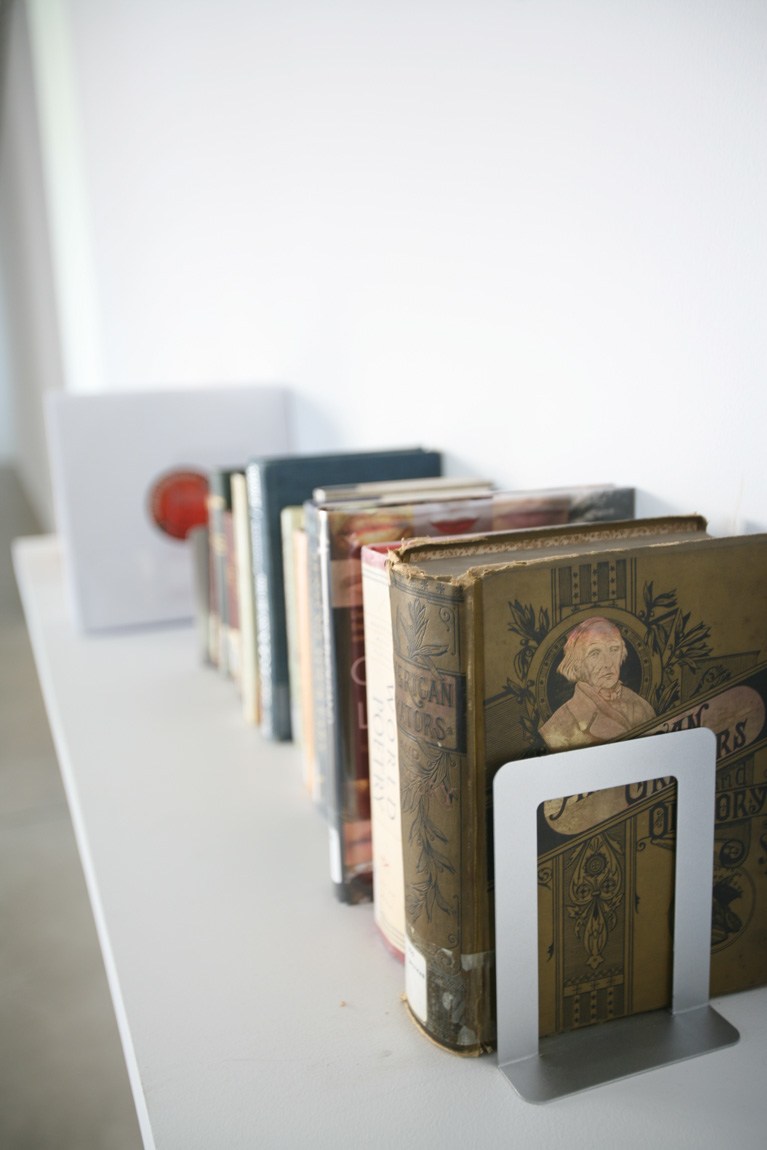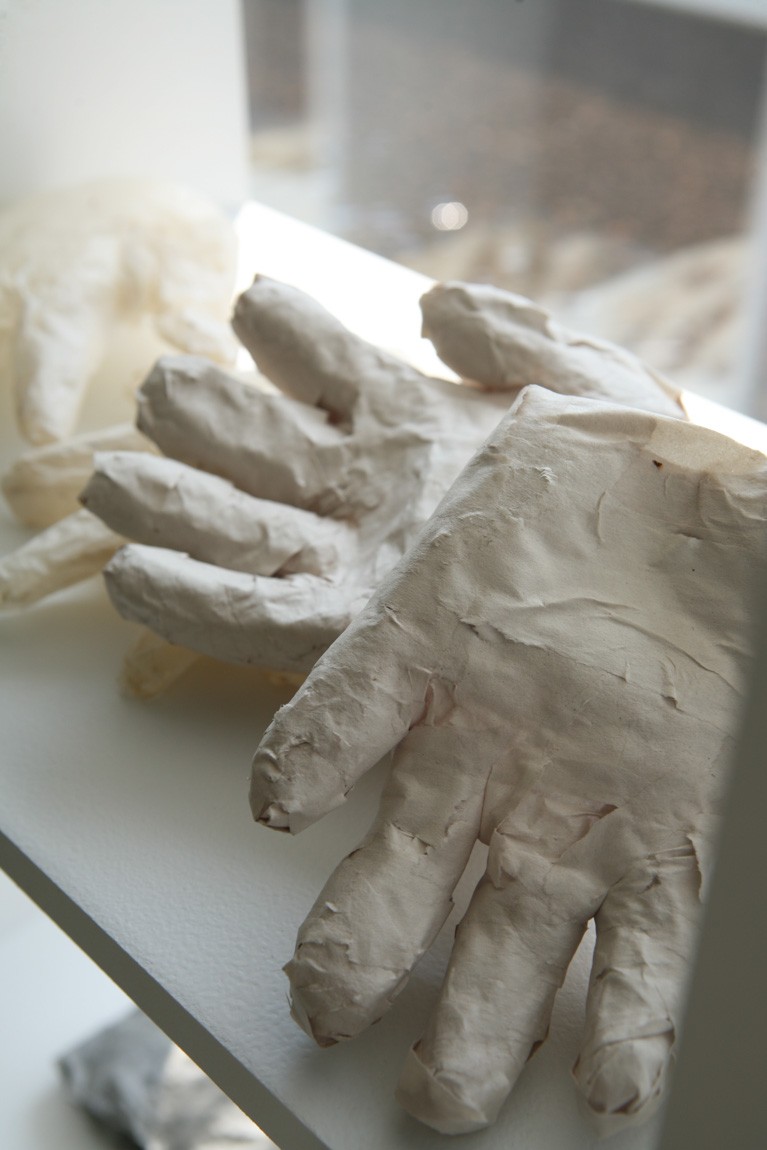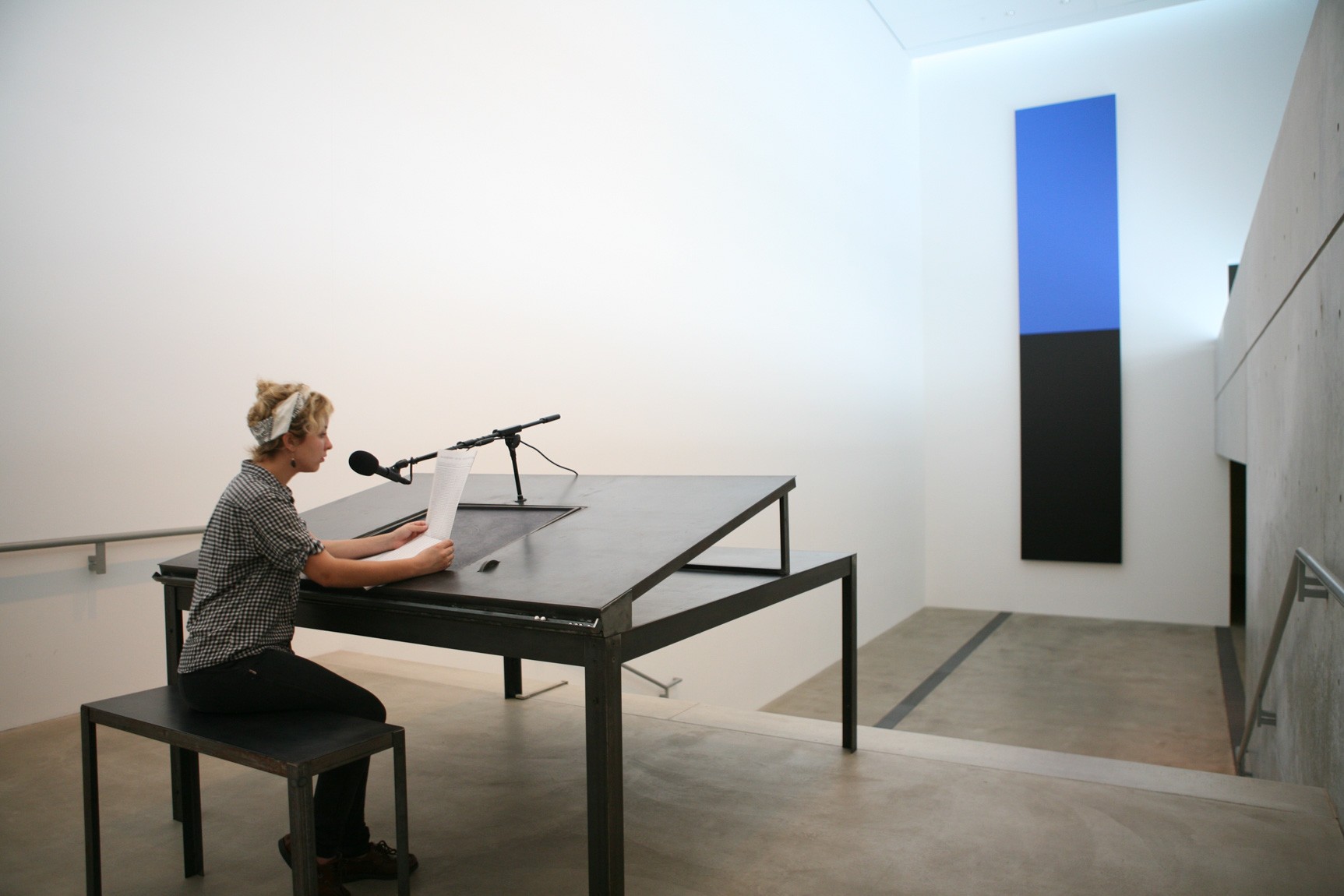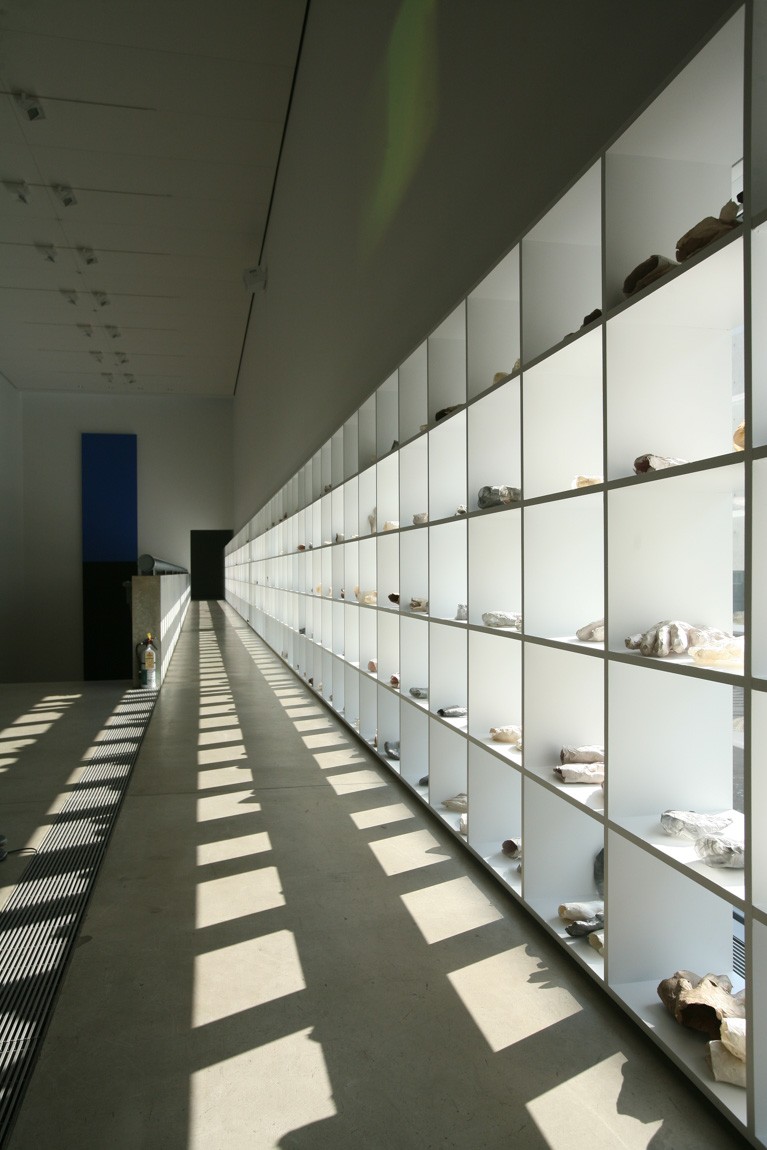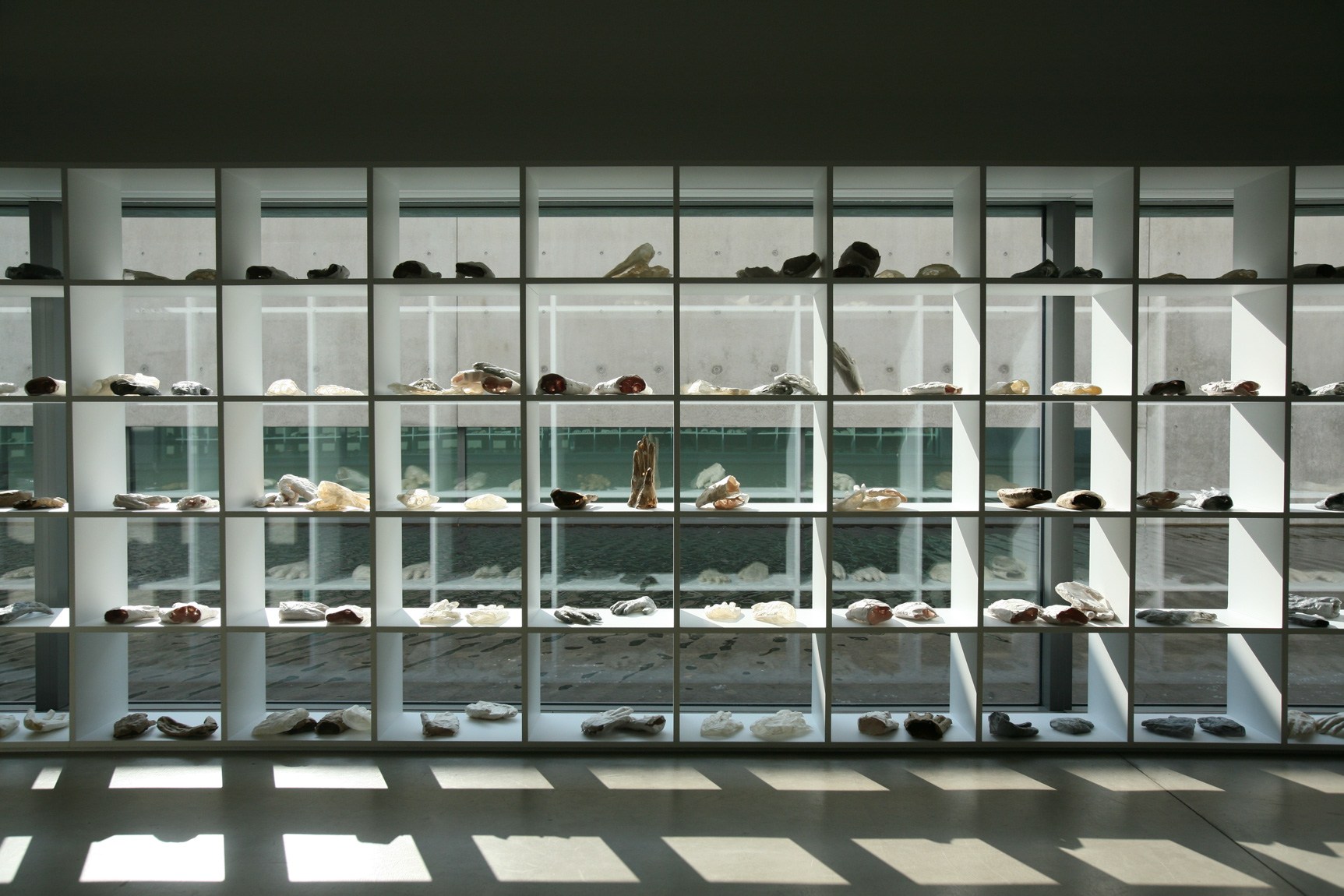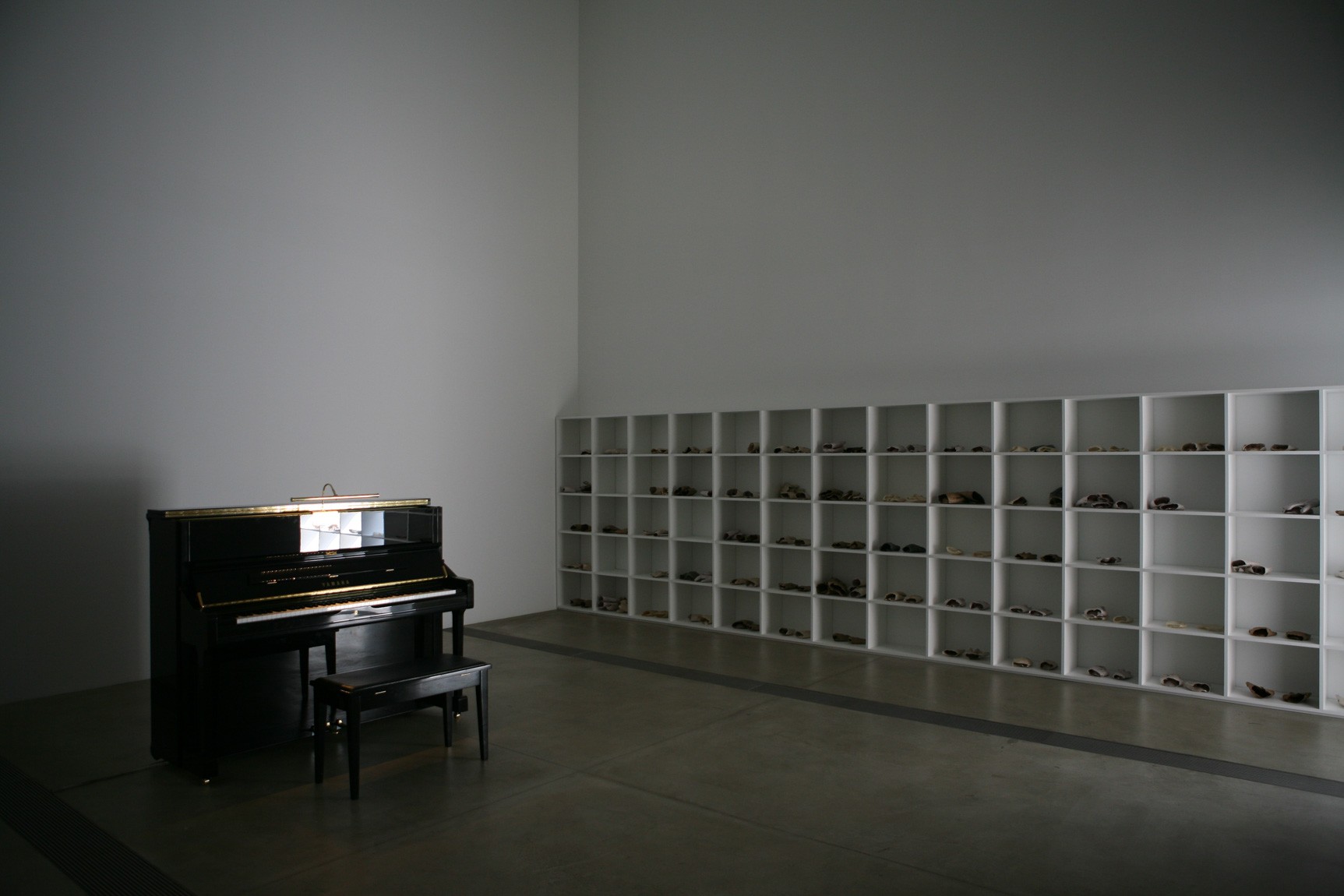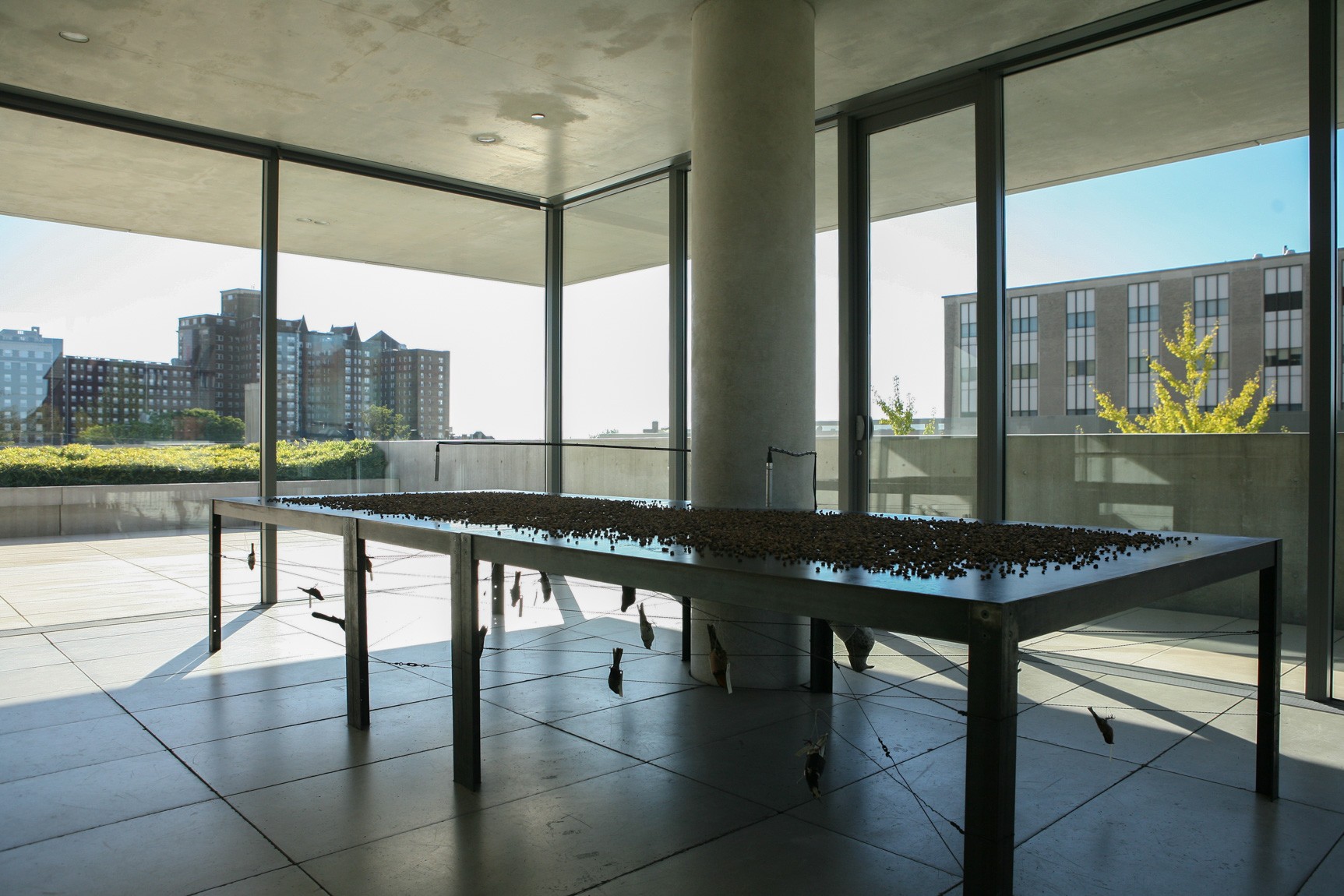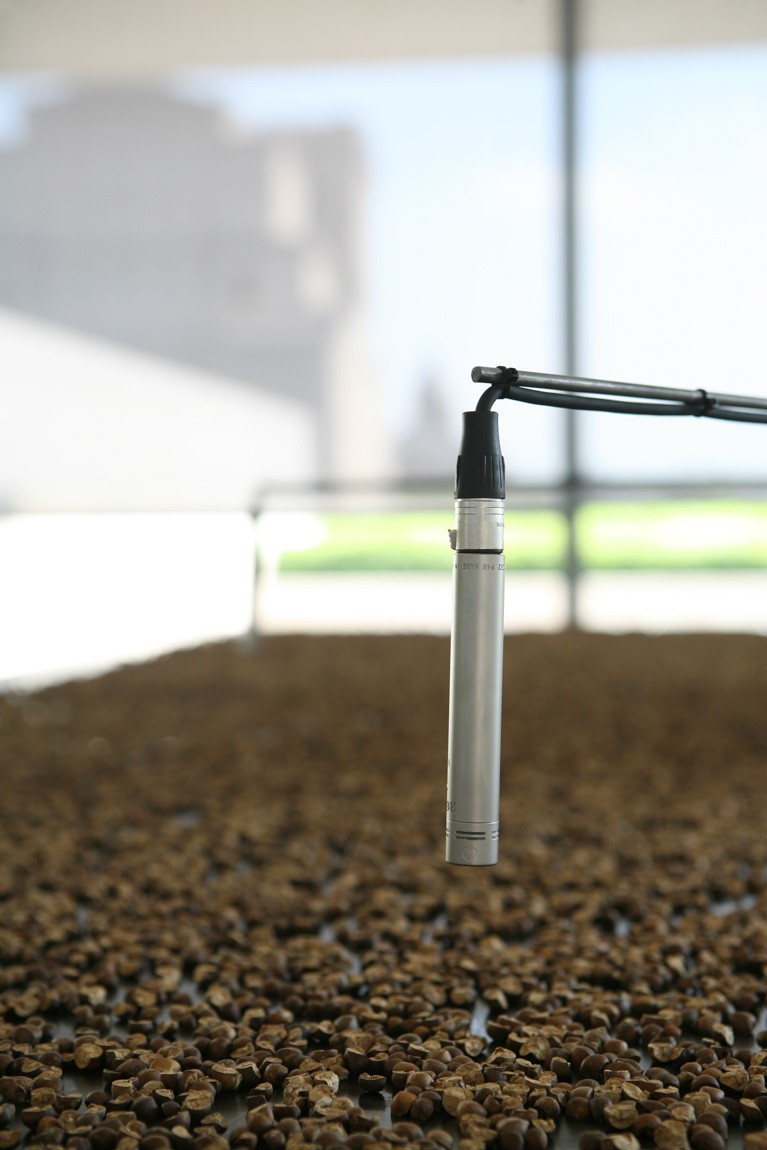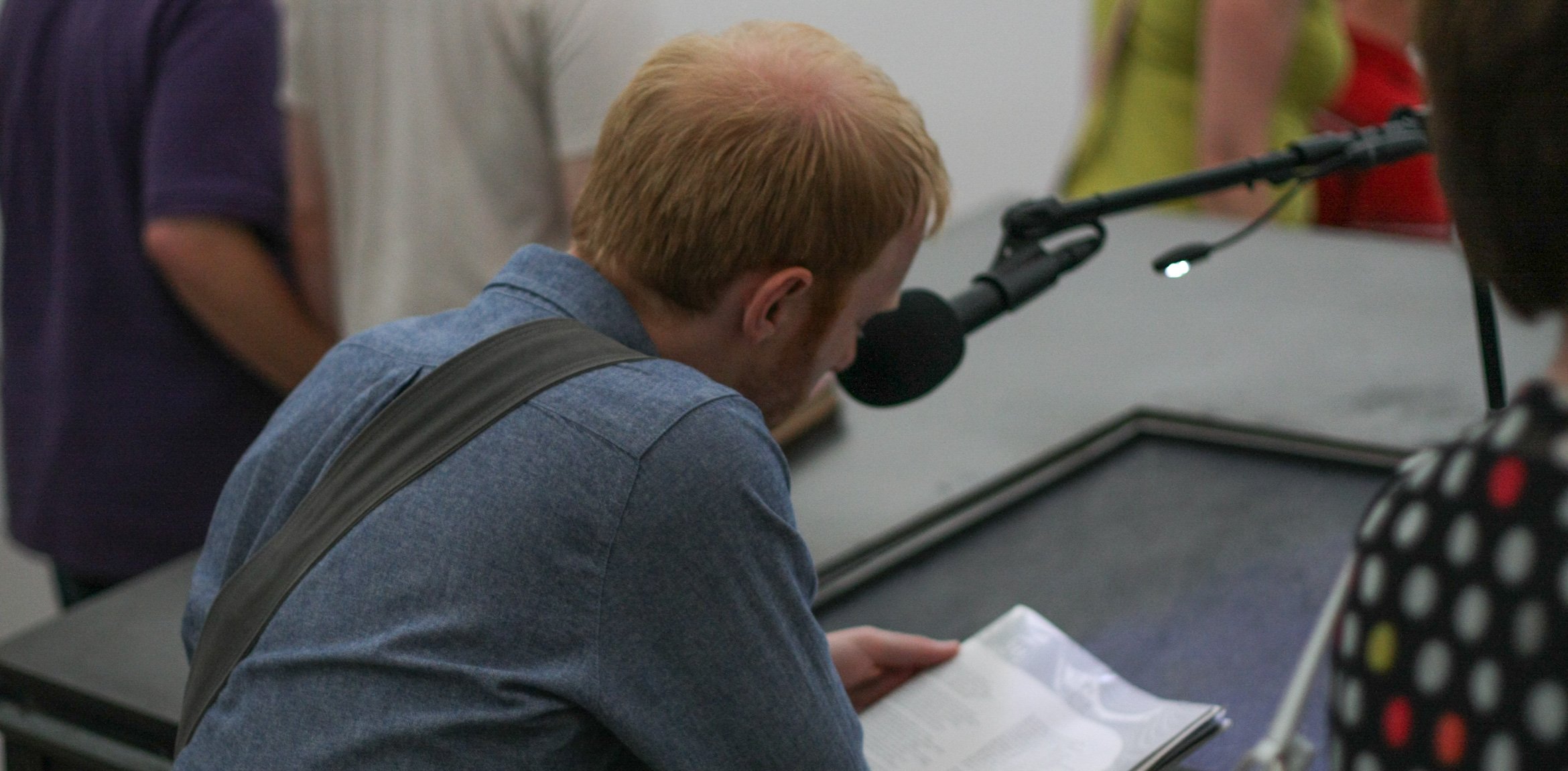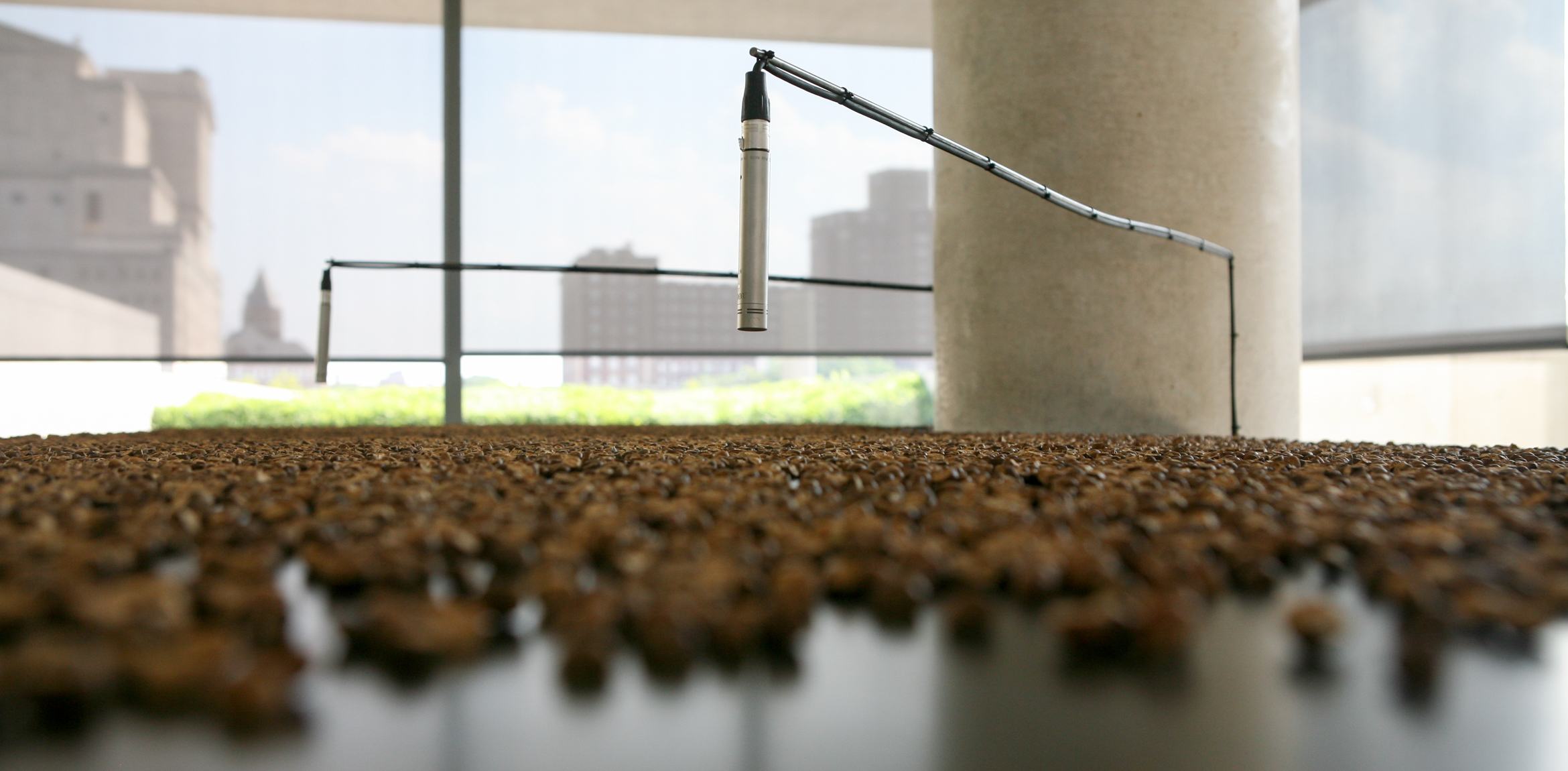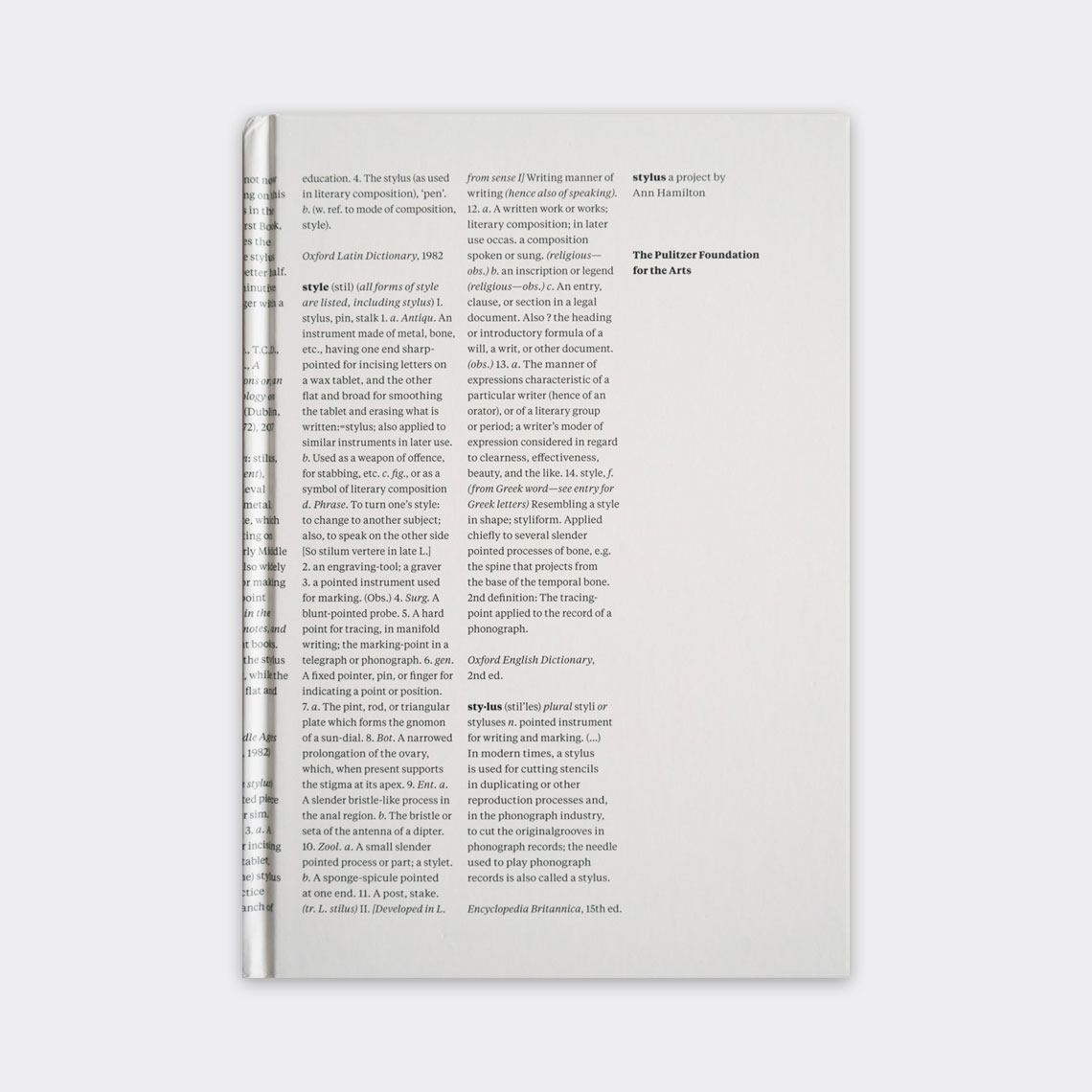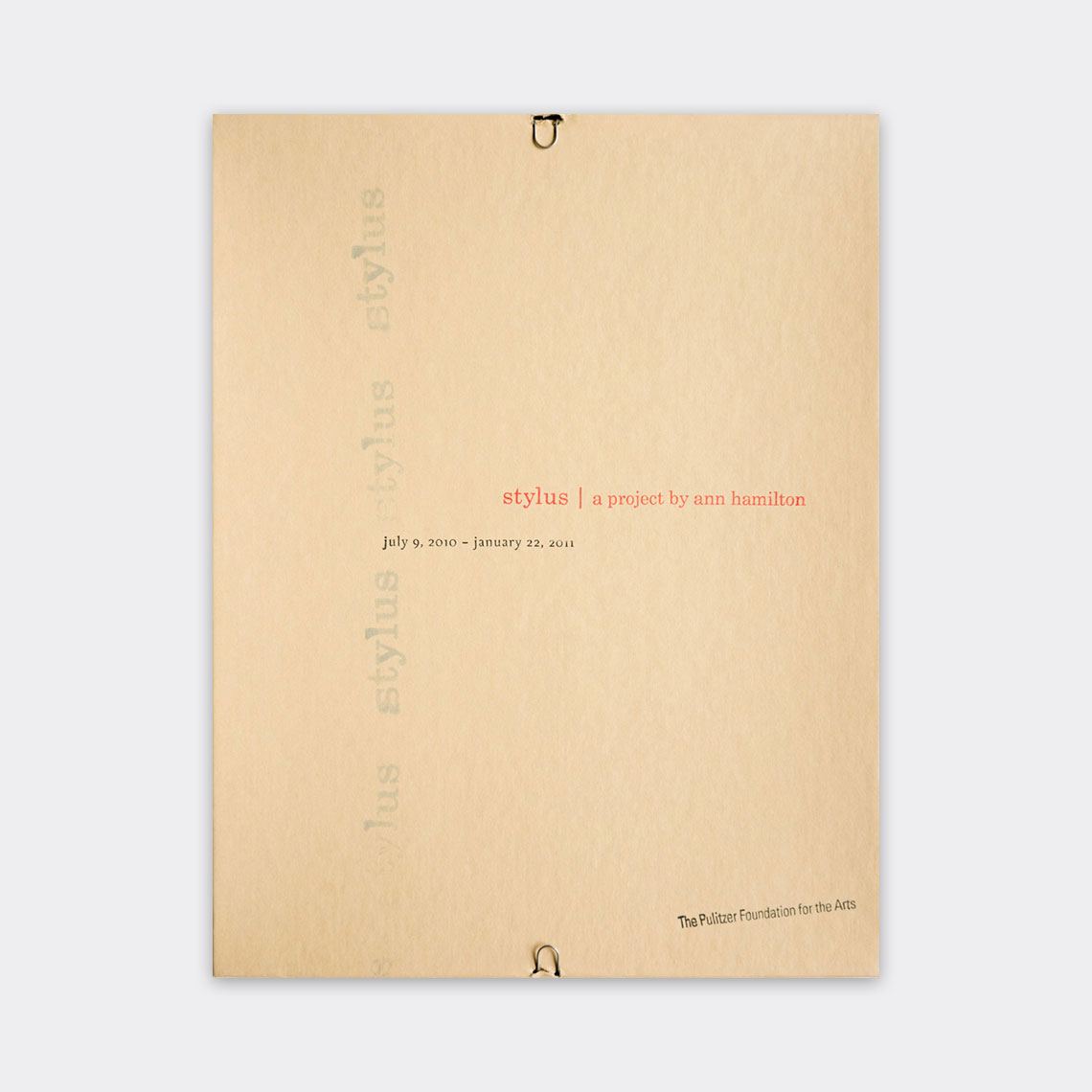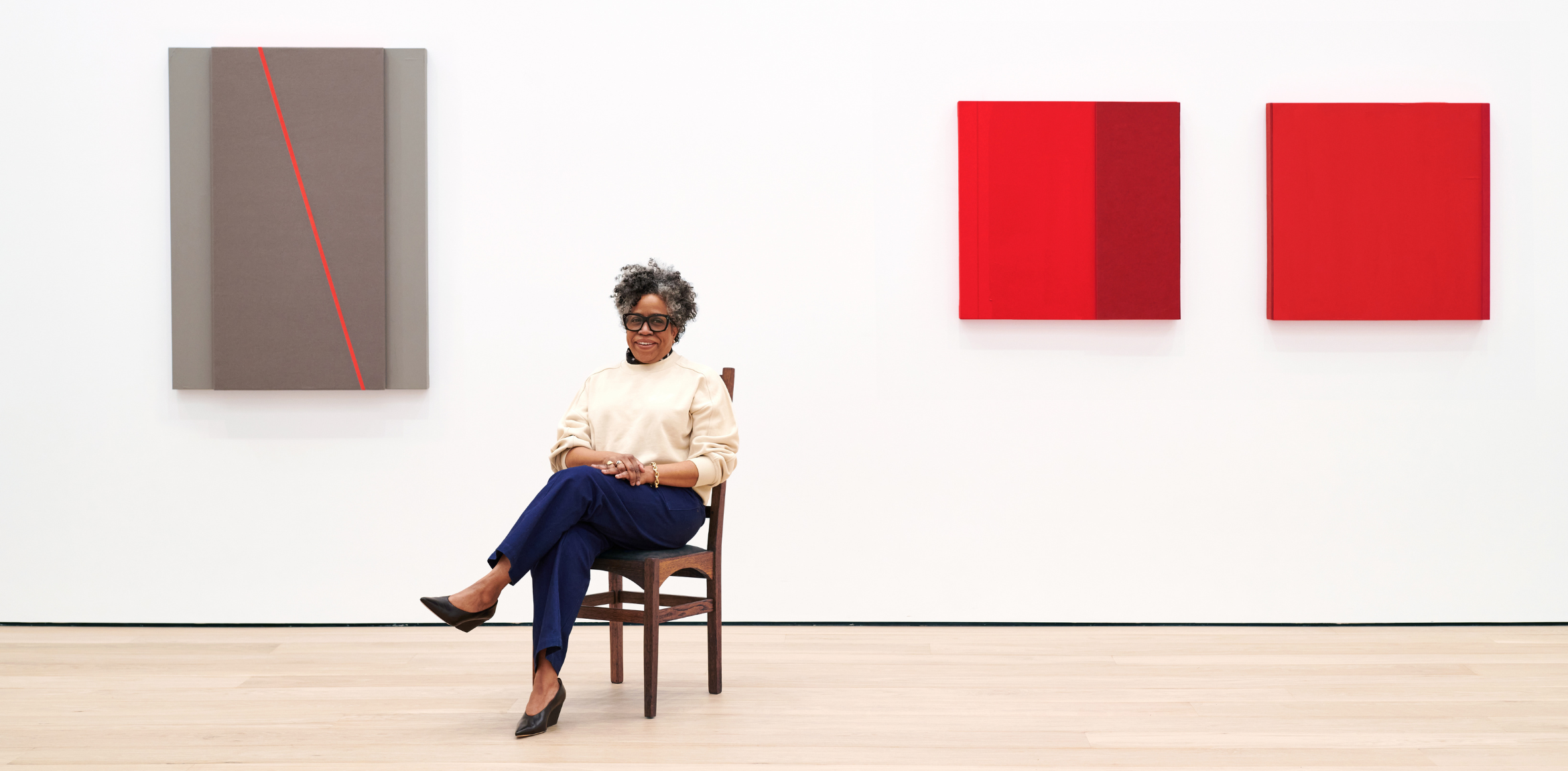Commissioned for Pulitzer Arts Foundation, Ann Hamilton’s stylus invited questions into some of the most fundamental acts of human communication: speech, writing, and touch. Through the dense accumulation of materials and media, stylus allowed for an immersive, interactive, and sensory experience of Tadao Ando’s architecture. As though unable to be contained, the installation also spilled outside the walls of the building into the physical and social environments of Grand Center, St. Louis, and beyond. By fostering collaborations both locally and remotely, stylus engaged the collective need for contact and response.
The experience of stylus began before one entered the Pulitzer building; loudspeakers mounted on the roof called out, transmitting a mix of telephone messages, music, and an audio transcript of the exhibition itself. Inside, visitors contributed to the installation’s accretive sound by signing in with a specially designed pad that generated faint piano sounds from the other side of the building. By definition, a stylus is a pointed instrument for writing, through which the touch of one’s hand yields to communication at a distance. Two turntables and a shelf of records were also situated in the Entrance Gallery, inviting visitors to shape the sonic atmosphere with their selection; the needle required to play records is also known as a stylus.
A steel table in the Main Gallery was equipped with a microphone, which fed guests’ voices into an audio system that triggered two pianos elsewhere in the building. On the Mezzanine, a table of jumping beans was also amplified, adding to the unpredictable live sound. The audio elements of stylus were developed in collaboration with composer and sound designer Shahrokh Yadegari, whose computer processing and playback systems created a variable and self-referential soundtrack that emanated from unseen sources.
The visual dimensions of stylus included a large video of clapping hands in the Entrance Gallery, of which both the gesture and gesturer were deeply indeterminate. Five rolling platform ladders situated throughout the Main Gallery served as a base for rotating projectors that cast videos across the surrounding space. A wall of cast-paper hands was installed in shelves that extended across the water court windows. Books and concordances were also present in the installation, adding layers of text that positioned reading—like writing—as itself a generative and creative act.
